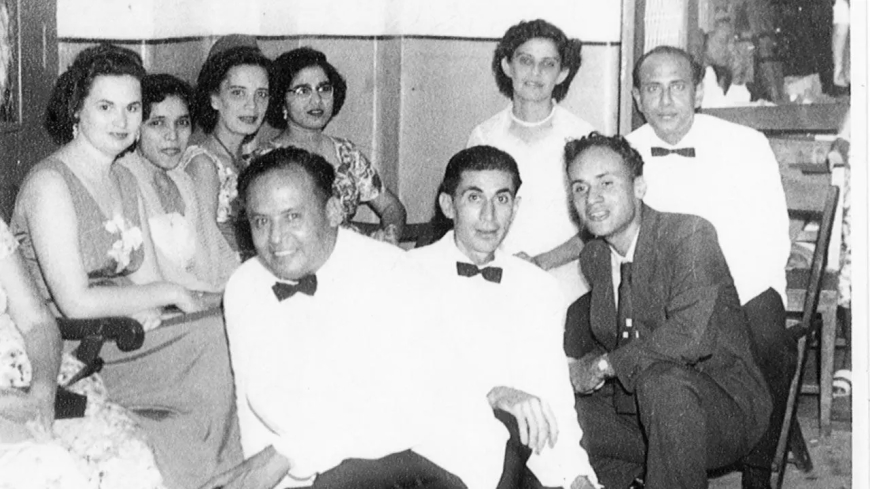The Anglo-Indians of India: A Community of Unique Heritage
Discover the rich history and vibrant present of the Anglo-Indian community in India. Learn about their origins, cultural contributions, and official associations working for their welfare.

India, a land known for its diverse cultures and rich history, is also home to a fascinating and unique community—the Anglo-Indians. With a lineage that blends European and Indian ancestry, Anglo-Indians have played a significant role in shaping India's history, especially during the British colonial era. But how did this community come into existence, and where do they stand today? Let’s dive deep into the intriguing journey of Anglo-Indians in India!
The Origins of Anglo-Indians
The story of Anglo-Indians dates back to the late 16th and early 17th centuries, when European traders, especially the Portuguese, Dutch, French, and British, began arriving in India for commerce and conquest. As they established settlements, many of them formed relationships with local Indian women, giving rise to a mixed-race population. However, the community that truly came to be recognized as Anglo-Indian emerged during British rule.
When the British East India Company expanded its influence in the 18th and 19th centuries, British men—particularly soldiers, administrators, and railway officials—often married or had children with Indian women. These children, having both British and Indian ancestry, were raised in a Westernized environment, speaking English and following British customs, while still retaining elements of Indian heritage.
By the 20th century, the Anglo-Indian identity was firmly established. The British viewed them as a buffer class—neither fully Indian nor entirely European—but a group that played a crucial role in administration, education, and the railways. However, after India's independence in 1947, the community faced a dilemma. Many Anglo-Indians, uncertain about their future in a newly independent India, migrated to countries like Australia, Canada, the UK, and New Zealand. Despite this exodus, a significant number chose to stay back, and today, Anglo-Indians are spread across the country.
Where Are Anglo-Indians in India Today?
Though smaller in numbers now, Anglo-Indians continue to thrive across India, particularly in cities that were once colonial strongholds. Some of the prominent Anglo-Indian communities are found in:
- Kolkata – The city has one of the largest Anglo-Indian populations, with neighborhoods like Bow Barracks still housing many families.
- Chennai – Once known as Madras, it has a strong Anglo-Indian presence, particularly in Perambur and St. Thomas Mount.
- Bengaluru – Anglo-Indians have contributed significantly to the city’s culture, with areas like Whitefield historically being home to many of them.
- Mumbai & Pune – Being major British colonial centers, both cities have vibrant Anglo-Indian populations.
- Goa – Due to Portuguese influence, many Goans with mixed ancestry also identify as Anglo-Indians.
Even in smaller towns like Jabalpur, Lucknow, and Secunderabad, Anglo-Indians have left their mark, particularly through schools, churches, and social organizations.
Official Anglo-Indian Communities and Their Role
Recognizing their distinct heritage, several Anglo-Indian associations have been formed across India to preserve culture, support the community, and promote education and welfare. Some of the most well-known organizations include:
1. The All India Anglo-Indian Association (AIAIA)
Founded in 1926 by Frank Anthony, this is the largest and most influential Anglo-Indian organization in India. It has branches across the country and works actively to:
- Provide scholarships for Anglo-Indian students
- Support elderly community members with financial aid
- Organize social events to keep cultural traditions alive
- Advocate for the community’s rights in political and social spheres
2. The Anglo-Indian Schools in India
One of the greatest contributions of Anglo-Indians to India is in the field of education. Many of India's most prestigious ICSE and ISC schools were established by Anglo-Indians, such as:
- Frank Anthony Public Schools (Delhi, Kolkata, Bengaluru)
- Loreto Schools
- La Martiniere Schools (Kolkata, Lucknow)
- St. Joseph’s and St. Mary’s Schools in various cities
These schools continue to uphold high academic standards while promoting Anglo-Indian values.
3. The Anglo-Indian Association of Kolkata
This community-based organization is particularly active in Kolkata, offering:
- Health support for elderly Anglo-Indians
- Employment assistance for younger members
- Annual cultural events like Christmas dances and traditional food festivals
4. The Bangalore Anglo-Indian Association
One of the most vibrant Anglo-Indian groups, this association conducts:
- Workshops for skill development
- Social gatherings to keep Anglo-Indian traditions alive
- Medical aid programs for senior citizens
These organizations, along with many others in Mumbai, Chennai, and Goa, ensure that the Anglo-Indian heritage remains preserved while also supporting those in need.
The Future of Anglo-Indians in India
Despite being a small community, Anglo-Indians have made extraordinary contributions to India in areas like education, sports, entertainment, and governance. Notable Anglo-Indians include:
- Ruskin Bond – The famous author known for his charming storytelling
- Leslie Claudius – Legendary field hockey player and Olympic gold medalist
- Melanie Sykes – British-Indian TV presenter with Anglo-Indian roots
Today, while many young Anglo-Indians choose to settle abroad for better opportunities, those who remain in India continue to make their mark. Their love for music, dance, and sports keeps their cultural identity lively, while their dedication to education and community service ensures that they remain a respected and cherished part of Indian society.
Final Thoughts
The Anglo-Indians of India are more than just a community—they are a legacy of India’s colonial past, a blend of cultures, and a testament to resilience. While their numbers may have dwindled, their contributions, traditions, and spirit remain strong. Whether it’s through their world-class schools, deep-rooted social bonds, or commitment to preserving their identity, the Anglo-Indians of India continue to shine as a proud and integral part of the country’s diverse cultural fabric.
What's Your Reaction?
 Like
0
Like
0
 Dislike
0
Dislike
0
 Love
0
Love
0
 Funny
0
Funny
0
 Angry
0
Angry
0
 Sad
0
Sad
0
 Wow
0
Wow
0



















































